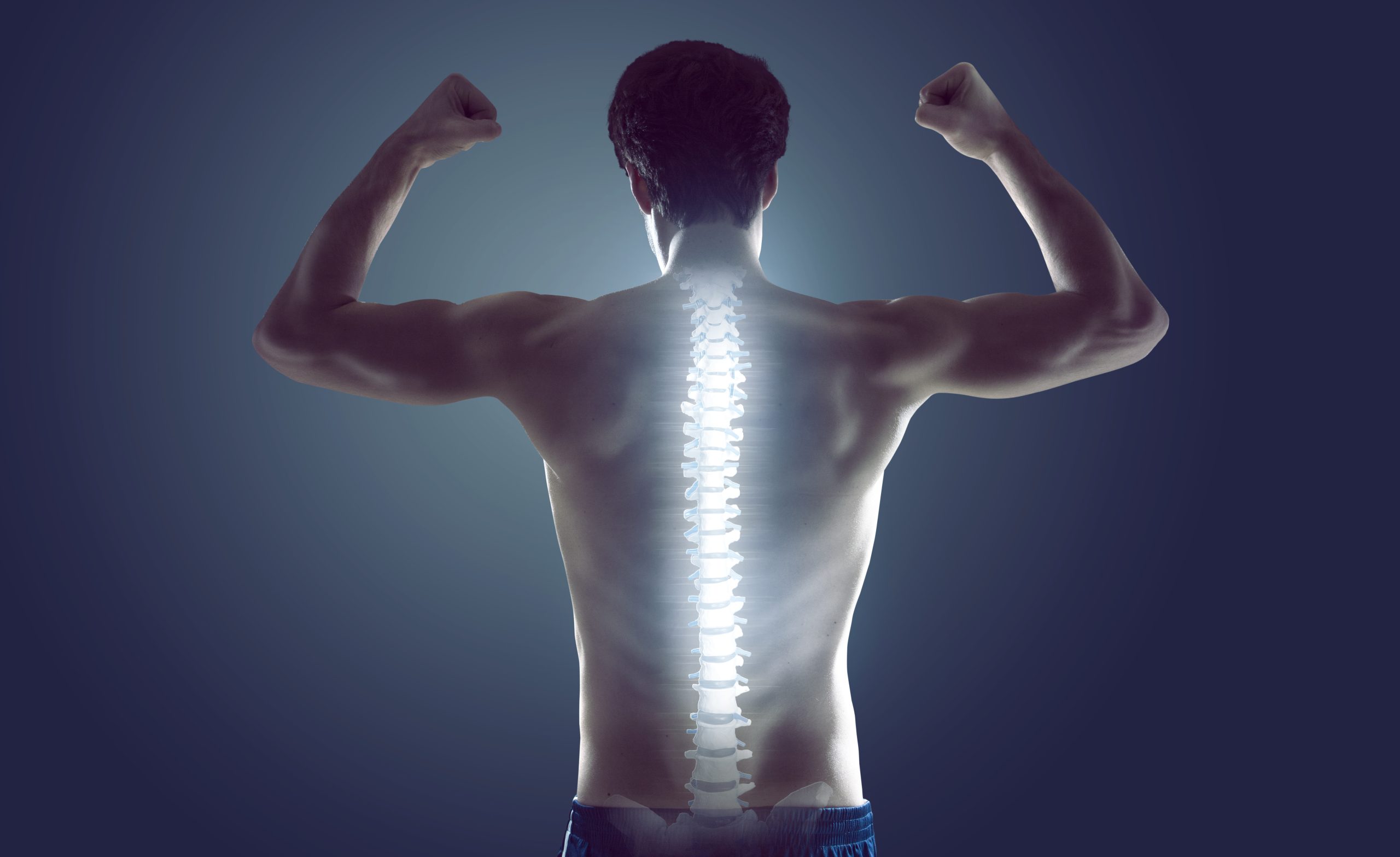WHY CHIROPRACTIC?
Chiropractic is a conservative, holistic approach to health care. It is natural, safe, and effective for all ages. Doctors of Chiropractic (DCs) are experts in diagnosing and treating conditions of the spine, muscles, and nervous system, and can provide guidance on lifestyle changes to improve overall health and wellness.
Chiropractic is the recommended first choice in treating lower back pain by numerous medical studies and the World Health Organization over opioid prescriptions or invasive surgeries. In fact, patients who use chiropractic cut their chances of being prescribed opioids by 64%. 1 Prescriptions filled in United States has increased by 85% in two decades and given the opioid epidemic, which has killed over 47,600 Americans since 2017, many patients are turning to chiropractic care for a better health care alternative.2
Chiropractic is proven to reduce pain, improve mobility, and enhance overall well-being. The safety, efficacy, and patient satisfaction of chiropractic care is unparalleled. Patients who use chiropractic are highly satisfied with the care and health benefits they receive and 96% likely to refer others.3
Chiropractic also offers a preventative health care approach that works for all ages from infants to seniors, and it beneficial for pregnancy from pre-conception through post-partum. Chiropractic is also more cost-effective than other types of traditional health care.
DCs serve as valuable members of your health care team and work as your advocate when collaborating with other health care providers to make sure you are receiving the best health outcomes and quality of care.

GET ANSWERS BELOW TO FREQUENTLY ASKED QUESTIONS ABOUT CHIROPRACTIC, SYMPTOMS AND CONDITIONS, AND FIND A CHIROPRACTIC PHYSICIAN NEAR YOU.
SYMPTOM CHECKER
Back pain is the leading cause of disability worldwide and the third most common reason why people visit the doctor. It makes everyday living and the ability to work difficult. Sitting, standing, sleeping and bending activities are impacted. This condition can affect all ages from adolescents to seniors. It is estimated that over 80% of the population will experience back pain at some point in their lives.
The back is a complex structure of the backbone, joints, ligaments, and muscles. Sprained ligaments, strained muscles, ruptured or herniated disks, and joint or nerve irritation are causes of back pain. The most common back problem is back strains or sprains. Back injuries can occur from poor posture, car accidents, falls, heavy or improper lifting, changes in the spine due to aging, and disorders or medical conditions.
Back pain can happen in the upper, middle, or lower areas of the back. The type of pain can range from a dull, constant ache to sudden, sharp pain. Back pain can also cause stiffness and shooting pains down through the legs. There are three levels of back pain: 1) acute: lasting up to four weeks, 2) subacute: from four to 12 weeks, and 3) chronic: over 12 weeks.
Treatment for back pain depends on the cause and symptoms of the pain. Unfortunately, the most widely used treatments are addictive opioid prescriptions or invasive surgeries. Both approaches can be dangerous and have long-term effects, and they are more costly than using other treatment alternatives.
Due recent acknowledgements of the many health risks, high costs, and poor patient outcomes associated with these traditional treatments, chiropractic and other non-invasive, non-drug options are now the first recommendation for the treatment of back pain. This recommendation has been studied and published by many outlets, including the Journal of the American Medical Association, Spine, and the Annals of Internal Medicine.
Chiropractic care is proven as a safe, drug-free, and highly effective treatment option for relieving most types of back pain. Chiropractic can help ensure that the bones, ligaments, and tendons are appropriately aligned, and treatments can be designed to strengthen supporting structures around the spine. Treatments include spinal manipulation, electrostimulation therapy, therapeutic exercises, and lifestyle changes to increase strength, flexibility, and range of motion.
Our necks have the tough job of supporting the full weight of our heads, which on average can be 12 pounds, and remaining flexible to move the head in all directions. Neck pain is a common condition and can be bothersome. The pain can be dull and achy to piercing. Postural stress can cause pain to radiate down to the upper back and arms.
The neck is just as susceptible to pain and injury as the back. Common causes are poor posture, repetitive movements, extended periods of sitting, accidents causing whiplash, falls or blows to the head or body, normal aging processes, and wear from daily activities.
Treatment for neck pain depends on the cause and symptoms of the pain. Chiropractic physicians will perform physical and neurological exams, checking range of motion, posture, spine, reflexes, muscle strength, and nerve changes, plus x-rays if needed. Once diagnosed, a treatment plan will be designed, which may include neck or spinal manipulation and therapeutic exercises.
Headaches and migraines can range from dull to throbbing pain, and can cause dizziness, vision changes, or nausea. The amount of pain can sometimes be debilitating and can disrupt daily living.
Headaches have many causes, which could include foods, environmental triggers like noise or lighting, stress, excessive exercise, or physical changes, such as blood sugar changes or extreme tension in the neck.
Research shows that chiropractic care, including spinal manipulation, is highly effective and can improve migraines and cervicognic headaches in most patients.
Carpal Tunnel Syndrome (CTS) is considered a repetitive stress injury, and is often cause by excessive computer use or repetitive use of the hands like in assembly work. Over time, this condition can cause pain and injury to the tissues of the wrist.
The earlier that CTS is diagnosed and treated, the better the outcome. Diagnosing CTS is usually done by physical examination and possible x-rays. Treatments for this condition include adjustments to the wrist, elbow, and upper spine, immobilization, therapeutic exercises, and inflammation reducation therapies.
A rotator cuff injury can painful and lead to serious quality-of-life issues. Shoulders have extremely flexible joints, which are easily susceptible to injury. Any activity or athletic movement that requires us to raise our hands above our heads repeatedly could cause inflammation to occur and over time, may lead to a more significant injury.
Some of the most common ways that people injure their rotator cuffs include:
- Repeatedly pitching a baseball
- Regularly serving a tennis ball
- Swimming thousands of yards per day
- Washing windows on a regular basis
- Painting walls for hours on end
There are a number of chronic medical conditions that could also lead to rotator cuff injuries. Some of the most common include:
- Shoulder arthritis
- Shoulder tendonitis
- Shoulder bursitis
Similar to other injuries, the sooner they are diagnosed, the faster they will heal. Therefore, it is important for everyone to be familiar with some of the most common symptoms of a rotator cuff injury.
Depending on the severity of a rotator cuff injury, it can present in different ways. Some of the most common ways that a rotator cuff injury might present include:
- There will be a dull ache or stiffness that is present at the back of the shoulder
- Individuals with a rotator cuff injury might notice arm weakness, particularly when trying to raise the arm above the head
- There could be a markedly restricted range of motion
- Individuals may notice disturbed and disrupted sleep patterns
Chiropractic care can help ensure that the bones, ligaments, and tendons are appropriately aligned, and treatments can be designed to strengthen supporting structures around the rotator cuff. Treatments include spinal manipulation, electrostimulation therapy, ultrasound waves, and therapeutic exercises to increase strength, flexibility, and range of motion in the rotator cuff.
Tennis Elbow is classified as a repetitive stress injury. 95% of people who suffer from tennis elbow, don’t play tennis at all!
Tennis elbow is the result of repetitive, forceful movements that cause inflammation, tears or strains of the elbow, which causes pain and impacts the range of motion.
Symptoms of tennis elblow include:
- Elbow and/or forearm pain
- Numbness of shooting pain into hands and/or neck
- Reduced strength in the affected arm(s) when trying to grip, carry or lift everyday objects
- Straightening the arm is imparied or painful to perform
- Golfers may feel painful shockwaves when striking the ball, or tennis players feel the same when their ball hits the racquet
- In severe cases, numbness and tingling can occur due to compression of the nerves caused by swelling
This condition is diagnosed through physical examination. Treatments include alignment of joints and bones through sinal maniuplation, acupuncture, laser therapy, ultrasound waves and inflammation reduction techniques.
Whiplash is the direct result of trauma, typically from a car accident. It is an injury to the neck muscles from rapid and sudden forceful movement of the head or neck in any direction that results in a “rebound” effect back to the original direction. This “whipping” motion causes damage to the surrounding and supporting tissues of the head and neck.
Treatment for neck pain depends on the cause and symptoms of the pain. Chiropractic physicians will perform physical and neurological exams, checking range of motion, posture, spine, reflexes, muscle strength, and nerve changes, plus x-rays or MRI if needed. Once diagnosed, a treatment plan will be designed to reduce inflammation, which first may include ultrasound waves, therapeutic exercises, and other techniques. Neck or spinal manipulation may be performed once inflammation and/or pain is decreased.
If you are experiencing any symptoms or want to improve your overall health, click
below to find a chiropractic physician near you to help assess your situation.
DON’T WAIT! GET ON THE PATH TO BETTER HEALTH TODAY!
ADVANCED CHIROPRACTIC TRAINING
Many chiropractic physicians seek advanced training for specific clinical specialities, techniques or services including:
-
-
-
-
-
-
-
- Acupuncture
- Chiropractic Radiology
- Chiropractic Neurology
- DOT Physicals
- Functional Medicine & Nutrition
- Laser Therapy
- Pregnancy & Pediatrics
- Sports & Performance
-
-
-
-
-
-

NUTRITION 101

What we eat can make a big difference in our overall health. According to the Academy of Nutrition and Dietetics, the most common nutrients we lack are potassium, calcium, vitamin D, and iron. It is best if they are consumed through the foods we eat, but supplements can be used if needed. If we are not receiving enough or the wrong nutrients, our bodies usually send signals to alert us, such as fatigue, soreness, headaches, or changes in weight.
Not only can a healthy diet help control our weight, but it allows our bodies to get the nutrients it needs to sustain good health. Our nutrient intake helps to control body mechanisms such as how our bodies generate energy, maintain equilibrium, and regulate our mental health. A good diet along with exercise is also a win-win for disease prevention.
Speak with your chiropractic physician to learn more about proper nutrition for better health.



